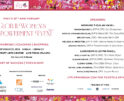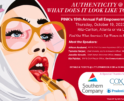
Brand-Aids for Brand Managers

Here’s how to heal your company’s bruised brand.
By Joey Reiman
Today’s brands play in a tough arena. They have been bruised by bad reputations, cut by irate customers and burned by their competitors. Enron and WorldCom destroyed their brands with bad leadership. Delta Air Lines fell from grace when service was no longer on their radar. And The Home Depot brand is in need of repair now that Lowe’s is offering more.
Brands are promises. When they are kept, customers keep them. When they are broken, customers leave them. These brand-aids can heal those relationships, soothe customers and protect your organizations.
1. Brands are people, too. Your whole company is your marketing department. Advertising, sales and brand managers need to enlist and insist that their colleagues across the organization understand and care as much about the brand as they do. Consumers do not distinguish between a print ad and a rude employee, both of which represent the company. Marketers need to reinforce their efforts at every level of the organization to build armies of zealots. Marketing may be your message, but your company is the messenger.
2. Brands are receivers, not transmitters. In past decades we sat on our couches, receiving messages from our advertisers (transmitters) about everything from headaches to hemorrhoids. This relationship has now been inverted by a powerful new consumer: She decides what she wants to receive, where and when she wants it and what color she wants it in. In many cases, she even dictates the price. Brands that understand this will hear the cash register ring. Those who continue transmitting what they believe she wants will get little if no reception.
3. Bonding Is the new branding. Branding is for cattle; it is a statement of ownership. Bonding is for people; it is a pronouncement of a relationship. Branding is burning your logo onto the hides of customers. Bonding is igniting a space inside customers’ hearts by creating meaningful and memorable experiences between your brand and its users. Ads rarely change behavior; to do that we need to create robust experiences that enrich lives.
4. Create a 10-year campaign. What makes companies change their marketing campaigns so quickly? Agencies. Why would agencies want to make this change? N. I. H. Syndrome. “Not Invented Here” Syndrome costs advertisers hundreds of millions of dollars every year. The agency model is based on self-preservation. If it only evolved your brand, its own brand would become extinct. But creative people are change agents, who should only destroy to build something better. A powerful solution would be to build on top of the brand. “We try harder,” “Have it your way” and “The real thing” are still relevant and are foundations to build legacies. Needless change costs dollars. Needful change builds equity. Your ad agency uses your brand to drive its own sales. Forget the retainer; use it on a project basis. Then the agency will focus on your solution rather than its problem, retaining you.
5. Public relations means public impact. Public relations is all about facts. Advertising is all about fiction. If your company has something newsworthy to say or offer, journalists will seek you out – the splash you pray, not pay, for. Conversely, most advertising takes what isn’t big news and makes you think it is. Instead of trying to get into someone’s head, try making headlines. Brands that improve public life, not just public perception, win the day.
6. Branding slow gets you there fast. Slow marketing is gentler and more polite. Advertising with manners invites people in, rather than capturing them, and presents a call to action, rather than a request to think. Reflection leads to reason and reason leads to wisdom. Predictability and reliability are time-embedded characteristics that create trust and loyalty. You may trick consumers into buying something with promises of less money or more miles, but if the relationship is discounted, no coupon will save it.
7. Stop advertising on Tv – people aren’t watching. TiVo has changed TV, forever. Gone are those “Happy Days” when families huddled together on the living room floor to watch “The Man from U.N.C.L.E.” “Bewitched” by the magic of TV, we were anxious to enter “The Twilight Zone” as long as our parents held our hands. Then TV was our guide to ourselves. When we looked into its mirror, we liked what we saw. “Father Knows Best” was comforting, if not plausible. Media gurus will boast that Nielsen Media Research claims nearly 170 million homes have their TVs on, but their power to persuade is all but “Six Feet Under.”
8. No brain, no gain. How do you convert a customer to your brand? Through loyalty, which drives purchase. While product features provide rational reasons to choose one product over another, they only work if the competition can’t do better. Loyalty is based on deep, long-lasting brand associations. Strong preferences operate on an intuitive – not rational – level. They choose the brand because they have made it theirs – literally. The brain has “coded” this brand as being consistent with the viewer’s idea of self. Creating brand loyalists thus means delivering a brand identity that reinforces, not violates, customers’ self-identity. She buys green products like Seventh Generation because she wants to support the environment.
9. Discover your company’s master idea. Every organization possesses a Master Idea – the galvanizing idea that aligns a company’s ideals, objectives and values. It restores, renews and guides the brands. Brands should never be defined by their competitors, but by their authentic and distinctive Master Idea. This Holy Grail or DNA will create an emotionally charged workplace, prolific innovation cycles and a genuine brand.
Joey Reiman is CEO and founder of The BrightHouse Consultancy.
Recommended
-
Fall 2024 EventNovember 19th, 2024
-
REGISTER HERE FOR THE UPCOMING...September 19th, 2024
-
Spring Sales Are Ready To Bloo...March 1st, 2024
-
Two Months Away!August 24th, 2023
-
Pink’s Signature Spring ...May 17th, 2023















